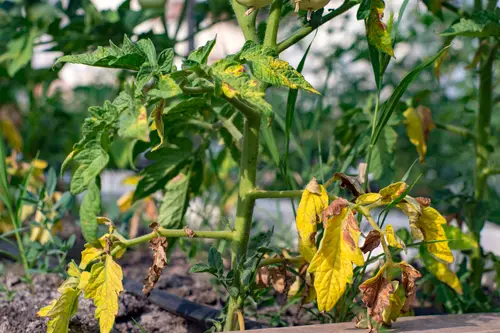Plants are a beautiful addition to any outdoor space, but sometimes they can be difficult to maintain. Have you ever noticed your outdoor plants looking wilted or dried up? If so, you’re not alone.
Many people struggle with keeping their outdoor plants healthy and thriving. In this article, we’ll explore the common causes of plant death and share tips on how to prevent it from happening to your plants.
Recognizing the signs of a dying plant is the first step in preventing further damage. Some common signs include yellowing leaves, wilting, and brown spots. These symptoms can be caused by a variety of factors, including inadequate watering, poor soil quality, and pests.
By identifying these signs early on, you can take action to save your plant before it’s too late. Understanding the importance of sunlight and soil quality is key to keeping your outdoor plants healthy. Plants need a certain amount of sunlight to grow and thrive, and different types of plants require different amounts of sunlight.
Soil quality is also important, as plants need the right balance of nutrients to grow. By providing your plants with the right amount of sunlight and soil, you can help prevent plant death and ensure that your outdoor space remains beautiful and vibrant.
Key Takeaways on Plants Dying Outside
- Recognizing the signs of a dying plant is crucial to saving it.
- Providing the right amount of sunlight and soil quality is key to keeping outdoor plants healthy.
- Proper plant care techniques and preventative measures can help prevent future plant deaths.
See why your other favorite plants are dying and how to revive them here:
Recognizing the Signs of a Dying Plant
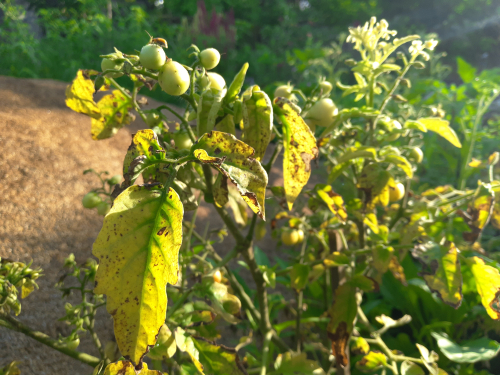
When it comes to outdoor plants, it’s not always easy to tell when they’re struggling. However, there are a few tell-tale signs to look out for. In this section, we’ll explore some of the most common indicators that your plant may be dying.
1. Wilting
Wilting is one of the most obvious signs that a plant is in trouble. If the leaves of your plant are drooping or curling inwards, it could be a sign that it’s not getting enough water. However, overwatering can also cause wilting, so it’s important to strike the right balance.
2. Yellow Leaves
Yellowing leaves are another common sign that a plant is struggling. If a few leaves are yellowing at a time at the bottom of your plant’s foliage, it’s probably nothing to worry about. Those older leaves are just dying off to make way for new growth. However, if the yellowing is spreading to the newer leaves, it could be a sign of a more serious problem.
3. New Growth
New growth is a good sign that your plant is healthy and thriving. If you’re not seeing any new growth, it could be a sign that your plant is struggling. However, it’s important to remember that different plants grow at different rates, so don’t panic if you’re not seeing new growth as quickly as you expected.
4. Dead Leaves
Dead leaves are a clear sign that your plant is in trouble. If you’re seeing a lot of dead leaves, it could be a sign that your plant is not getting enough water, nutrients, or sunlight. However, dead leaves can also be a sign of overwatering or disease, so it’s important to investigate further.
Plants Dying Outside – 4 Common Problems
Plants are susceptible to various factors that can lead to their death. Knowing these factors is essential to prevent plant death and maintain a healthy garden. In this section, we will discuss the most common causes of plant death, including overwatering, underwatering, diseases, and pests.
1. Overwatering

Overwatering is one of the most common causes of plant death. It occurs when plants receive too much water, which can lead to root rot, a condition that prevents the roots from absorbing nutrients and water. Symptoms of overwatering include yellowing leaves, wilting, and mold growth.
To prevent overwatering, gardeners should ensure that the soil is well-draining and that plants receive the appropriate amount of water, depending on the species. A moisture meter can be used to determine if the soil is too wet or too dry.
2. Underwatering
Underwatering is another common cause of plant death. It occurs when plants receive too little water, which can cause the leaves to wilt and turn brown. In severe cases, the plant may die.
To prevent underwatering, gardeners should ensure that plants receive enough water, especially during hot weather or when the soil is dry. A good rule of thumb is to water plants when the top inch of soil is dry.
3. Diseases
Diseases can also cause plant death. Fungal and bacterial diseases can infect plants and cause symptoms such as yellowing leaves, wilting, and stunted growth. Common diseases that affect outdoor plants include powdery mildew, blight, and rust.
To prevent diseases, gardeners should practice good sanitation by removing any dead or infected plant material. They should also avoid overcrowding plants, which can increase humidity and promote disease growth. Applying fungicides or bactericides can also help prevent diseases.
4. Pests
Pests such as aphids and spider mites can also cause plant death. These pests feed on the plant’s sap, which can cause the leaves to yellow and eventually fall off. In severe cases, the plant may die.
To prevent pest infestations, gardeners should inspect their plants regularly for signs of pests. They should also avoid over-fertilizing plants, which can attract pests. Applying insecticides or using natural pest control methods such as introducing beneficial insects can also help prevent pest infestations.
The Role of Sunlight
Plants require sunlight to grow and thrive. However, too much or too little sunlight can be detrimental to their health. In this section, we will discuss the role of sunlight in plant growth and how it affects outdoor plants.
Direct Sunlight
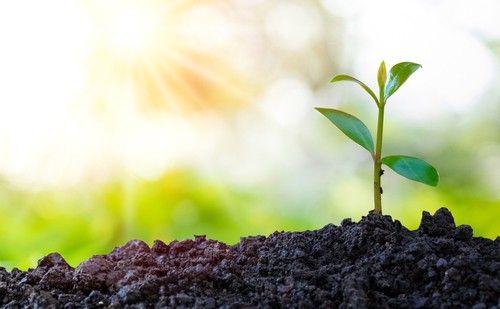
Direct sunlight is essential for many plants to grow and produce flowers and fruit. However, too much direct sunlight can cause sunburn and damage to the leaves and stems of plants. This is particularly true for plants that are not adapted to high levels of sunlight, such as those that are native to shady environments.
When planting outdoor plants, it is essential to consider the amount of direct sunlight they will receive. Some plants require full sun, while others prefer partial shade. It is crucial to choose plants that are appropriate for the amount of sunlight in the area where they will be planted.
Full Shade
On the other hand, full shade can also be harmful to plants. Plants that are adapted to full sunlight may not receive enough light in a shady environment, which can cause them to grow weak and spindly. Additionally, plants that are grown in full shade may be more susceptible to diseases and pests.
When planting in full shade, it is essential to choose plants that are adapted to these conditions. Some plants, such as ferns and hostas, thrive in shady environments and can add color and texture to a garden.
Understanding the Importance of Soil
Soil plays a crucial role in the growth and health of outdoor plants. Understanding the importance of soil can help gardeners diagnose problems and take steps to ensure their plants thrive.
Soil Type
Different plants have different soil requirements. Some plants prefer sandy soil, while others thrive in clay soil. Gardeners should research the soil requirements of their plants and make sure they are planting in the appropriate soil.
Soil Moisture
Soil moisture is another important factor to consider when planting outdoor plants. Overwatering or underwatering can cause plants to wilt, turn yellow, or even die. Gardeners should monitor the moisture level of their soil and adjust watering accordingly.
Poor Soil
Poor soil can also contribute to plant problems. Soil that is low in organic matter may not provide the necessary nutrients for plants to thrive. Compacted soils can also make it difficult for plants to establish roots and take up water and nutrients.
To improve poor soil, gardeners can add organic matter such as compost or manure. This can help improve soil structure and fertility. If soil is compacted, gardeners can aerate the soil by using a garden fork or renting an aerator.
The Impact of Weather and Environment

When it comes to outdoor plant health, weather and environmental factors play a significant role. In this section, we will explore the impact of climate zone, rain, and weather on your outdoor plants.
Climate Zone
The climate zone in which you live can have a significant impact on the health of your outdoor plants. Different plants thrive in different climate zones, and planting a plant that is not suited to your climate zone can lead to poor growth and eventual death.
It is important to research the climate zone in which you live and choose plants that are well-suited to your area.
Rain
Rain is essential for the growth and health of outdoor plants, but too much or too little rain can be detrimental. Plants that require a lot of water may suffer during periods of drought, while plants that are sensitive to water may develop root rot if they are overwatered. It is important to monitor the rainfall in your area and adjust your watering schedule accordingly.
Weather
Extreme weather conditions such as high winds, frost, and heatwaves can also impact the health of outdoor plants. High winds can damage leaves and stems, while frost can cause plants to die back.
Heatwaves can cause wilting and sun scorch, leading to leaf drop and eventual death. It is important to protect your plants during periods of extreme weather by covering them with frost cloth or shade cloth.
Plant Nutrition and Fertilizers
Plants need a variety of nutrients to grow and thrive, and sometimes outdoor plants can suffer from a lack of proper nutrition. Fertilizers can help provide these nutrients to your plants, but it’s important to understand which nutrients your plants need and in what quantities.
Nitrogen
Nitrogen is a key nutrient that is essential for plant growth. It is a major component of chlorophyll, which is responsible for photosynthesis. Nitrogen helps plants produce green, healthy foliage and is particularly important for leafy vegetables like lettuce and spinach.
Plants can become nitrogen deficient if the soil does not contain enough of this nutrient. Symptoms of nitrogen deficiency include yellowing leaves and stunted growth. To address a nitrogen deficiency, gardeners can apply a nitrogen-rich fertilizer such as blood meal or fish emulsion.
Potassium

Potassium is another important nutrient that plants need in order to grow and thrive. It helps with root development, disease resistance, and water uptake. Potassium is particularly important for fruiting plants like tomatoes and peppers.
Plants that lack potassium may develop weak stems and root systems, and may also be more susceptible to disease. Gardeners can apply a potassium-rich fertilizer such as wood ash or kelp meal to address a potassium deficiency.
Phosphorus
Phosphorus is a nutrient that is essential for strong root development and flower and fruit production. It helps plants convert other nutrients into usable forms and is particularly important for flowering plants like roses and petunias.
Plants that lack phosphorus may have stunted growth and may not produce flowers or fruit. Gardeners can apply a phosphorus-rich fertilizer such as bone meal or rock phosphate to address a phosphorus deficiency.
When using fertilizers, it’s important to follow the manufacturer’s instructions carefully and not to over-fertilize, as this can lead to nutrient imbalances and other problems. By understanding the specific nutrient needs of your plants and providing them with the right fertilizers, you can help ensure that they stay healthy and vibrant all season long.
Dealing with Plant Diseases and Pests
When it comes to outdoor plants, diseases and pests can be a common issue that causes plants to wither and die. It’s important to identify and treat these problems as soon as possible to prevent further damage to the plant and surrounding foliage.
Leaf Spot
One common disease that affects outdoor plants is leaf spot. This is characterized by small, circular spots on the leaves that can be brown, yellow, or black. These spots can eventually merge, causing the leaves to turn yellow and fall off.
To prevent leaf spot, it’s important to keep the leaves dry and avoid overhead watering. If leaf spot is already present, removing infected leaves and spraying with a fungicide can help control the spread of the disease.
Powdery Mildew
Another common disease is powdery mildew, which is characterized by a white, powdery coating on the leaves and stems of plants. This can cause leaves to curl and become distorted and can eventually lead to plant death.
To prevent powdery mildew, it’s important to provide good air circulation and avoid overcrowding plants. If powdery mildew is already present, spraying with a fungicide or applying neem oil can help control the spread of the disease.
Root Rot
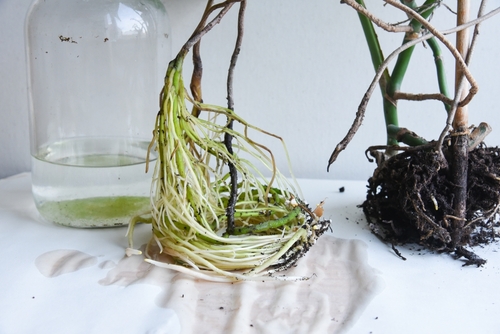
Root rot is a common problem that affects outdoor plants, especially those that are overwatered or planted in soil that doesn’t drain well. This disease is caused by a fungus that attacks the roots, causing them to rot and preventing the plant from absorbing water and nutrients.
To prevent root rot, it’s important to avoid overwatering and ensure that the soil has good drainage. If root rot is already present, removing infected plants and treating the soil with a fungicide can help control the spread of the disease.
In addition to these specific diseases, there are a variety of other pests and diseases that can affect outdoor plants. Using preventive measures such as regular inspections, proper watering, and using sprays when necessary can help keep plants healthy and thriving.
Proper Plant Care Techniques
1. Watering
Proper watering is essential for outdoor plants to thrive. One of the most common reasons for plant death is inadequate watering. Outdoor plants require specific amounts of water to keep their roots hydrated and growing healthily.
When an outdoor plant has been under-watered, it wilts and dies. If it has been overwatered or is planted in soggy soil that doesn’t drain well, it will drown, and the roots will die or rot.
The frequency of watering depends on the type of plant, the soil, and the climate. Some plants require more water than others, and some need to be watered more frequently. A good rule of thumb is to water outdoor plants deeply once a week. However, this can vary depending on the weather conditions and the type of plant.
To check if a plant needs watering, stick your finger into the soil up to the second knuckle. If the soil feels dry, it’s time to water. If it’s still moist, wait a few more days before checking again.
2. Repotting
Another essential aspect of proper plant care is repotting. Plants need room to grow, and if they become root-bound, they won’t be able to absorb enough nutrients from the soil.
The best time to repot a plant is in the spring when it’s starting to grow again. Choose a pot that’s one size larger than the current one, and make sure it has drainage holes.
Gently remove the plant from its current pot and loosen the roots. Place the plant in the new pot and fill it with fresh soil. Water the plant thoroughly and place it in a spot with the appropriate amount of sunlight.
3. Mulching
Mulching is another essential technique for proper plant care. Mulch is a layer of organic or inorganic material that’s placed on top of the soil. It helps to retain moisture, suppress weeds, and regulate soil temperature.
Organic mulches, such as bark, leaves, and straw, break down over time and add nutrients to the soil. Inorganic mulches, such as rocks and gravel, don’t break down but can help to regulate soil temperature.
To mulch outdoor plants, spread a layer of mulch around the base of the plant, making sure not to cover the stem. The layer should be about 2-3 inches thick. Reapply the mulch as needed, usually once a year.
Preventing Future Plant Deaths
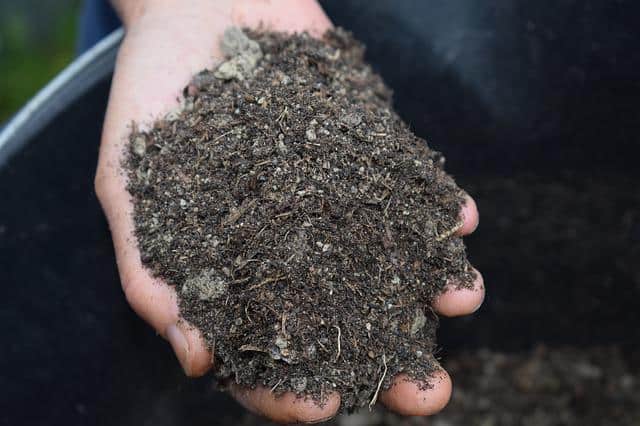
To prevent future plant deaths, there are several steps that can be taken. Composting, using the right amount of sun and water, and choosing the right plants are all important factors to consider.
Composting
Composting is a great way to provide your plants with the nutrients they need to thrive. Compost is made up of organic materials such as leaves, grass clippings, and food scraps. By adding compost to your soil, you can improve its texture and structure, which will help your plants grow stronger and healthier.
Using the Right Amount of Sun and Water
One of the most common reasons for plant death is over-watering or under-watering. It’s important to find the right balance between the two. Outdoor plants require specific amounts of water to keep their roots hydrated and growing healthily. When an outdoor plant has been under-watered, it wilts and dies.
If it has been overwatered or is planted in soggy soil that doesn’t drain well, it will drown, and the roots will die or rot. Similarly, plants need the right amount of sunlight to grow. Some plants require full sun, while others need partial shade.
Make sure to research the specific needs of your plants to ensure that they are getting the right amount of sun and water.
Choosing the Right Plants
Choosing the right plants for your garden is crucial to their survival. Some plants are better suited for indoor environments, while others thrive outside. It’s also important to choose plants that are native to your area, as they are more likely to be adapted to the local climate and soil conditions.
Additionally, consider the amount of care and attention each plant requires. Some plants are low-maintenance and can survive with minimal care, while others require more attention and regular watering.
Frequently Asked Questions
What are some common reasons for outdoor plants to die?
There are several reasons why outdoor plants may die. Some of the most common reasons include inadequate amounts of water, lack of sunlight, nutrient deficiencies, pests, diseases, and extreme temperatures.
Without proper care and attention, outdoor plants can quickly become stressed, which can cause them to wilt and eventually die.
How can I identify what is killing my outdoor plants?
The first step in identifying what is killing your outdoor plants is to inspect them closely. Look for signs of wilting, discoloration, or damage to the leaves, stems, and roots.
You should also check the soil for signs of pests or diseases. If you are unsure what is causing the problem, you may want to consult a gardening expert or take a sample of the affected plant to a local nursery for diagnosis.
What steps can I take to save my dying outdoor plants?
If you notice that your outdoor plants are dying, there are several steps you can take to try to save them. First, make sure they are getting the right amount of water and sunlight.
You may also need to fertilize the soil or treat the plants with pesticides or fungicides to help control pests and diseases. If the problem persists, you may need to remove the affected plants and replant with new, healthy specimens.
Why are my potted flowers dying outside?
Potted flowers may die outside for several reasons, including overwatering, underwatering, lack of sunlight, nutrient deficiencies, or root rot.
To prevent your potted flowers from dying, make sure they are planted in well-draining soil and placed in an area with the right amount of sunlight. You should also water them regularly and fertilize the soil as needed.
Why are my outdoor shrubs turning brown and dying?
Outdoor shrubs may turn brown and die due to a variety of factors, including lack of water, pest infestations, nutrient deficiencies, or exposure to extreme temperatures.
To prevent your shrubs from dying, make sure they are planted in well-draining soil and watered regularly. You may also need to prune the shrubs to remove any dead or diseased branches and treat them with pesticides or fungicides to control pests and diseases.
What can I do if my outdoor perennials are dying?
If your outdoor perennials are dying, you may need to take several steps to revive them. First, make sure they are planted in well-draining soil and getting the right amount of sunlight.
You may also need to fertilize the soil and treat the plants with pesticides or fungicides to control pests and diseases. If the problem persists, you may need to remove the affected plants and replant with new, healthy specimens.

Hey, I’m Lisa and I’ve been an avid gardener for over 30 years. I love writing, talking and living in the garden! Feel free to connect with me on my socials below

